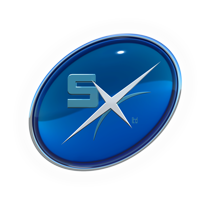The attraction of multi-megapixel chips is great, but many common telescope designs cannot give a high quality image over the entire area of a large CCD. This is especially true of the popular ‘SCT’ instruments and many camera users have been disillusioned by the poor star images that tend to appear at the edges of their images. A normal SCT has a high focal ratio of around F10 and this is generally too large for deep sky imaging, unless you intend to specialise in small, bright objects like planetary nebulae. Because of this, I recommend that a focal reducer should be used, but avoid reducing below about F5 if you want to keep a reasonably flat field across your CCD. At F5, acceptable results can be achieved with CCDs up to about 2/3 inch format (such as the SXVF-H9), but this is very much the limit. To cover a larger chip, you must consider purchasing an Astrograph of some description, such as a well-corrected refractor or a flat-field reflecting design. One of the best available is the Takahashi FSQ106 and this will cover any of our CCDs with pinpoint stars, but there are many cheaper options with very good performance. Another popular option is to convert your SCT into a very fast (F2) imaging platform by replacing the secondary mirror with a ‘Hyperstar’ lens from ‘Starizona’. These lenses will cover an SXVF-M25C chip and offer an extremely fast imaging system. The low profile and symmetrical body design of the SXVF cameras is ideal for these on-axis optical systems. Here is a summary of suggested cameras for different telescopes:
- Standard SCT with focal reducer (F5): SXVF-M5, M5C, H5, M7, M7C – possibly SXVF-H9, H9C and M9. Limited by field curvature and vignetting.
- SCT with Hyperstar (F2): All cameras up to SXVF-M25C – it is well suited to small pixel cameras (M8C, H9, H9C)
- Highly corrected refractor (F5): All SXVF cameras. Some types may need extra optics to cover the largest chips (e.g. Sky90)
- ED glass refractor (F5): Most SXVF cameras, but limited by UV and IR colour error (fringe filters may be needed). Field curvature can limit the CCD size, so check the specifications.
- Astrographs (e.g. R/C and Epsilon): Most SXVF cameras (some may not cover the H35 or H36).
